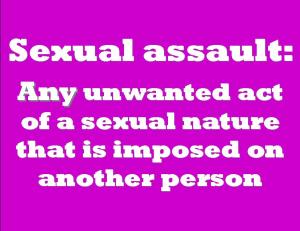New category on this blog: Internet safety. We’ll be exploring many facets of this category on the blog in the future. Today, we’ll talk about women bloggers, safety, hate speech, and freedom of speech.
The Experience of Women Bloggers
What happens
Women who blog have been routinely subjected to the kind of sexually based slurs and threats that it’s hard to imagine. If you read the comments section in women’s blogs, you will almost invariably see some sort of slur based purely on the blogger’s sex. This is after she has filtered the comments and not let the worst ones through. When a woman who blogs gets threats through the blog that someone should/wants to/is planning to rape her, mutilate her, or kill her, we have a safety issue.
A typical reaction
It’s very easy for those who don’t face this type of reaction to say, “Well, men get slammed and criticized in their blogs, too. If women can’t take it, they should just get off the Internet.” These aren’t bad people; they’re simply unaware of how different, and how awful, the comments really are on women’s blogs. Whether they’re interested in finding this out is an individual decision.
To equate the garden-variety insults and trolling that everyone gets with the gender-based, women-hating comments that show up on women’s blogs is to be entirely out of touch with what’s really happening. In women’s blogs, these comments are not merely mean naughty insults that hurt people’s fee-fees. They are vile, threatening, and chilling.
Examples
Some articles and real-life examples here and here and here and here. There are many more available with a quick Internet search. See whether these comments toward women look really similar to what you see in the comments section of the typical male blogger. He may get called out on wrong info, heavily engaged on his opinion of the issues, or even called names. But he will probably not have his home address posted in the comments alongside a threat to come and rape him, described graphically and in detail.
Free speech vs. hate speech
Efforts are being made to address this problem, but nothing that would abridge free speech — women bloggers don’t want free speech abridged. They just want to be safe and not have to deal with out-of-control, filthy verbal hatred. The challenge women face on the Internet is that they believe in free speech — even if it means a certain group consistently comes on their blogs and attacks them for being women. The problem is what to do when free speech on a woman’s blog so often devolves into vituperation, filth, and hatred from a small but vocal minority, for no other reason than that the blogger is female. The targeting is very specific — women.
Women bloggers will tell you from wisdom and experience that there’s no point in engaging these haters; they won’t change and it will only intensify their threats and the sick cruelty of their comments on the blog.
The only real solution is to block their comments or IP, and many women bloggers find that a number of haters simply sign up for another email account or uses another computer and come right back. In the meantime, more haters have found the blog by then. So she’s dealing with a constant stream of the worst ideas that can come into the heads of woman-haters. And the worst ideas are as bad as you can imagine.
But when do threats cross over into real danger? At what point does vituperative gender-based venting become hate speech? Many women bloggers can answer that question specifically, using comments on their own blogs as examples. But because we all –women included — want the Internet to continue to be a free and open exchange, we all — men included — face this problem.
Until men as a gender realize and accept the level of hate and danger that women bloggers as a gender face, we won’t all be united in combating people whose hate seems to utterly control them. I think many people don’t realize just how much those few bad eggs really, really, really hate women.
But it’s just talk
It may only be a matter of time before we start seeing news stories of these threats being actually carried out. It is my own hope that the haters are cowards who spew bile and muck online but won’t take action. Even so, no one should have to tolerate that kind of unbridled hate speech. And it is hate speech, even if in the interest of free speech we never decide to classify it that way. We, all of us, don’t want to find out whether a threat is credible only by reading about it afterward in the next morning’s paper.
Ideally, people would want to mature, would get psychological help, would do whatever it took to work past their hatred of women so that we didn’t have this terrible choice between free speech and just spewing uncontrolled hatred on women bloggers. I believe, and other women have said, that free speech is more important.
It’s shameful that a small group has to pay such a high price on behalf of everyone online in order to help preserve free speech. And women bloggers are paying that price to support free speech, in which they firmly believe. It would be great for them to hear and know that others are cognizant of the price they’re paying and the hatred and danger they’re coping with in order to make sure we all have a free place to speak and be heard — even those who post hate speech and least deserve that freedom.
Take a first step
What can we do? This is not a rhetorical question, but a real one. I’d like to hear your ideas, suggestions, and comments. (Be forewarned that comments that dismiss, derail, blame, or are hostile will not be posted.) We’re looking for comments here that are productive, generate more thinking and ideas, and/or support bloggers who have experienced this level of hatred and hostility. So really, what can we do to combat this?
Thanks, bloggers! You rock.
Filed under: for men, Internet safety, sexual harassment | Tagged: blog, blogger, commenters, comments, Freedom of speech, Hate speech, Internet, People, safety, women, women bloggers | Leave a comment »
 Found a wonderful note in Facebook from 2010. To my knowledge, the legal decision referenced in this note is still in force today. It is a horrifying precedent. Used by permission of the writer.
Found a wonderful note in Facebook from 2010. To my knowledge, the legal decision referenced in this note is still in force today. It is a horrifying precedent. Used by permission of the writer.







Most Read Post, Most Commented Post and Worst Response Post
Surprise? The second most commented post on this blog is Marital Rape. This, too, has held consistent over time.
The worst response was to an early post, Street Harassment on Public Transport. As an inexperienced blogger, I got into a fruitless discussion with a reader who was irate that some countries were considering and implementing separate transportation for women since women, of course, are the source of all evil in the universe. I didn’t know then that whether male or female, such readers only feel encouraged by any response you make, and they don’t read anything you write. After learning valuable lessons from the exchange, I ended up deleting the whole conversation from the comments section. Let’s just say it started negatively and went downhill from there. Whee, that was entertaining.
I’ll post occasionally about the most popular topics. Use this as a springboard to suggest ideas or send in questions.
Filed under: for parents, sexual assault, sexual harassment, street harassment | Tagged: blog, blog comments, child molester, Child sexual abuse, commenter, marital rape, rape, sexual harassment, street harassment | Leave a comment »